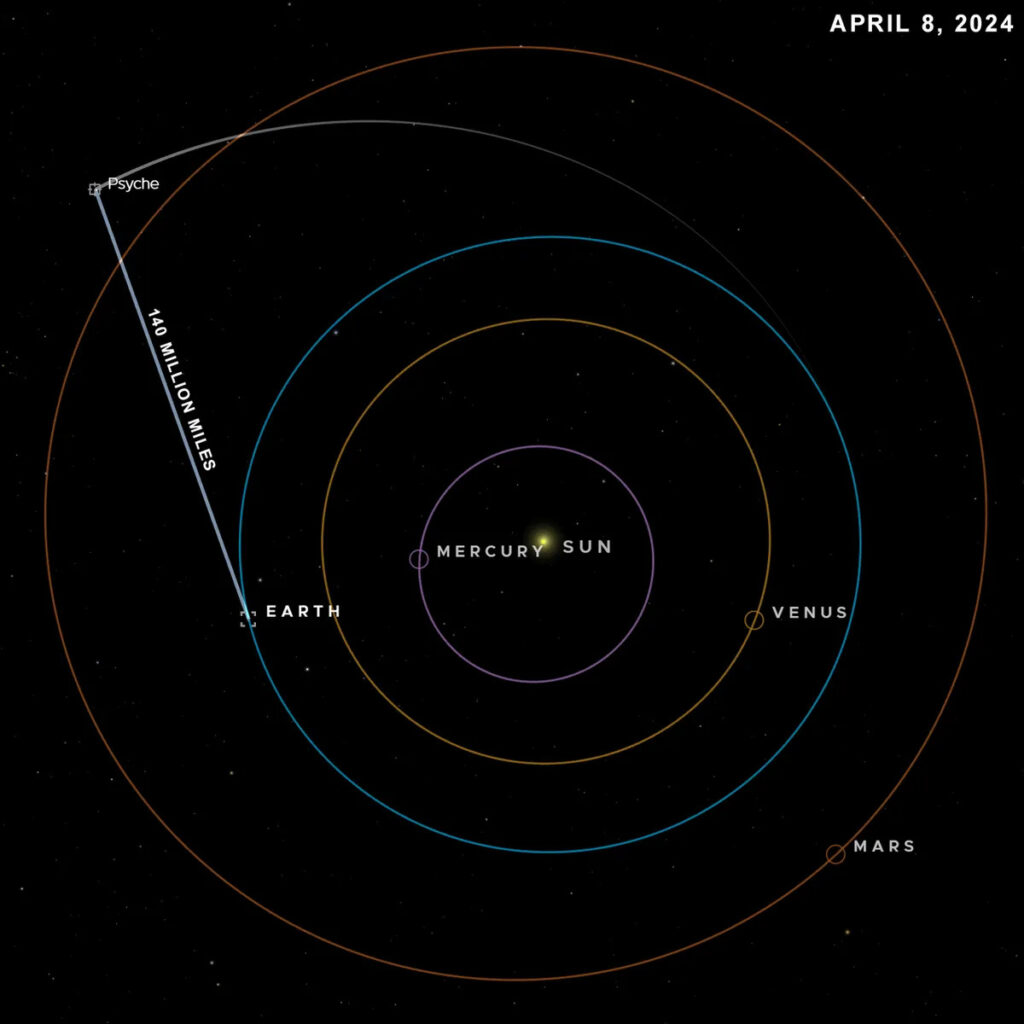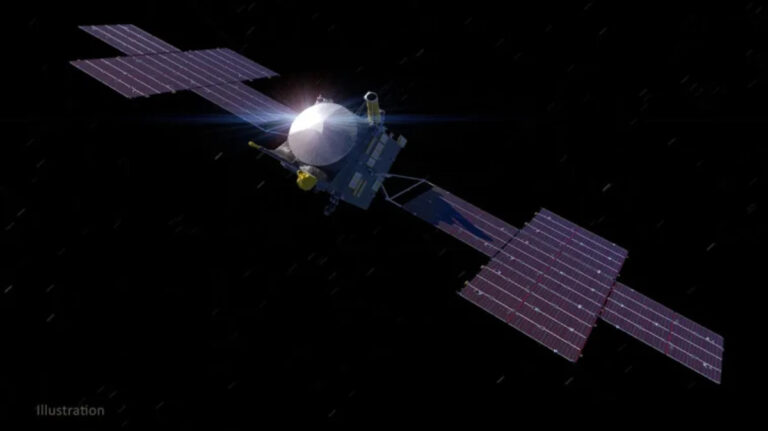The universe is a symphony, with each celestial body playing its unique part. As someone deeply immersed in the rhythm of the music world, I find an intriguing parallel in the latest strides made by NASA’s Psyche mission. Just as a revolutionary sound can change the music industry, this mission is set to transform our understanding of space communication. Recently, NASA’s Psyche mission achieved a milestone that resonates like a breakthrough single on the charts: it successfully tested an infrared laser communication system, sending data back to Earth from an astounding distance of 140 million miles.
Record-Breaking Transmission
NASA’s Psyche mission aims to explore the asteroid (16) Psyche, nestled in the asteroid belt between Mars and Jupiter. This isn’t just any asteroid; it’s predominantly composed of metal, mainly nickel and iron, making it a unique specimen in our solar system. The mission’s goal is to decipher Psyche’s composition, structure, and history, offering insights into the formation of planets and asteroids. In a bold move, the mission team opted to test an optical communication system using an infrared laser, rather than relying on traditional radio waves.
The results were nothing short of spectacular. From a distance of 140 million miles—about 1.5 times the distance between Earth and the Sun—the laser successfully transmitted data at a staggering rate of 25 Mbps. This speed surpasses the initial target of at least 1 Mbps and outpaces conventional radio transmissions by 10 to 100 times. It’s akin to a new artist smashing streaming records on their debut.
Why Use Lasers?

The choice to use laser communication is akin to a band switching from analog to digital sound—it’s about precision, clarity, and efficiency. Laser communication offers several advantages over traditional radio waves, particularly for deep-space missions like Psyche.
First, the data transmission rates are significantly higher. The infrared laser used in the Psyche mission achieved a maximum data rate of 25 Mbps, which means researchers can receive and analyze mission data much faster, accelerating scientific discovery. This is like being able to download an entire album in seconds rather than minutes.
Second, laser communication systems can be more energy-efficient. These systems often require less power than radio systems, which is crucial for space missions where energy resources are limited. Lower energy consumption can extend the lifespan of space equipment and reduce maintenance costs, much like an efficient sound system that conserves power without compromising quality.
Challenges Ahead
However, even the best innovations come with their challenges, much like navigating the pitfalls of the music industry. For laser communication, one major hurdle is the need for a direct line of sight between the spacecraft and the ground station. Atmospheric disturbances, such as clouds, can block the laser beam, causing communication interruptions. This is akin to an outdoor concert being rained out, disrupting the performance.
Additionally, maintaining precise alignment between the spacecraft and the ground station is critical. The spacecraft’s movements and gravitational perturbations can disrupt this alignment, requiring sophisticated tracking and correction systems to ensure stable communication. This precision is similar to a live performance where every note and beat must be perfectly synchronized.
Moreover, the initial costs and complexity of laser communication systems are higher than traditional radio systems. This could make implementation challenging for some space missions, particularly those with strict budget constraints. It’s like investing in state-of-the-art studio equipment—expensive but potentially game-changing.
Looking to the Future
Despite these challenges, researchers remain optimistic about the future of laser communication. Further tests are scheduled for June, when Psyche will be 2.5 times the distance between Earth and the Sun. These tests will push the technology to its limits and, if successful, could pave the way for a high-data-rate network between Earth and Mars. Imagine a world where our communication with distant spacecraft is as seamless as streaming a live concert from across the globe.
As someone who lives and breathes the beat of the music industry, I can’t help but marvel at the harmony between technological innovation and exploration. Just as a groundbreaking album can redefine genres, NASA’s advancements in laser communication are set to revolutionize space exploration, bringing us closer to the stars than ever before. So, let’s tune in and keep our eyes on the skies—both for the latest hits and the next frontier in human achievement.






